15 Popular Depression Glass Patterns Every Collector Should Know
Depression glass is a popular collectible that holds significant historical value. Known for its vibrant colors and intricate patterns, these glassware pieces were produced during the Great Depression. Today, collectors seek out these timeless items for their beauty and craftsmanship. Some of the most sought-after patterns include iconic designs such as the Cherry Blossom and American Brilliant Cut Glass. Whether you’re a seasoned collector or just starting, knowing the key patterns is essential.
This post may contain affiliate links, which helps keep this content free. Please read our disclosure for more info.
American Brilliant Cut Glass Pattern
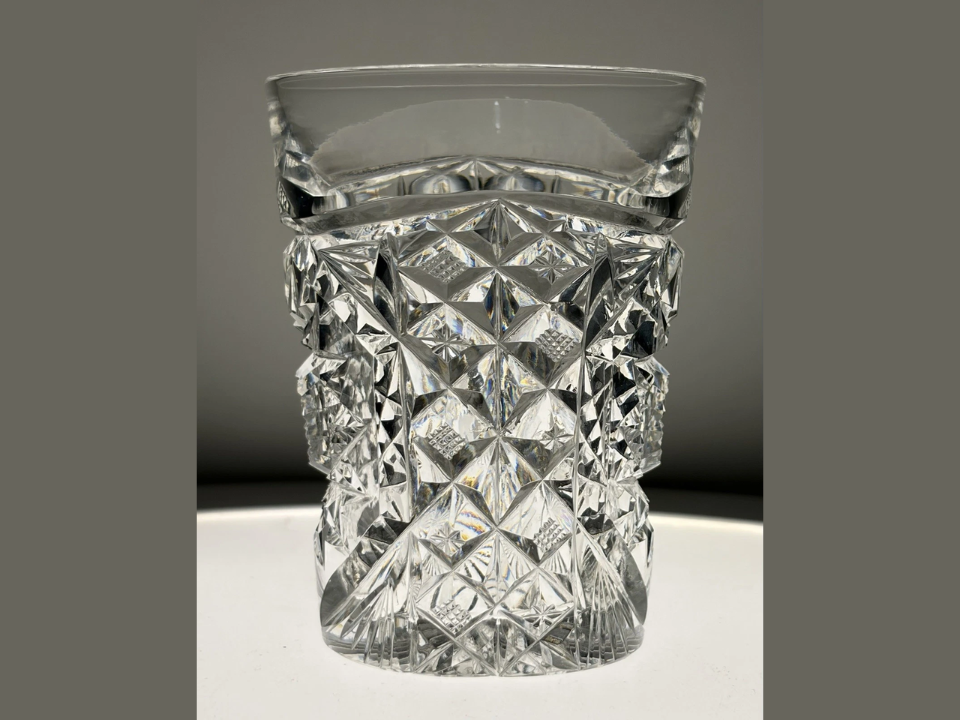
The American Brilliant Cut Glass Pattern is a classic design known for its deep cuts and intricate details. Often referred to as one of the most elegant forms of depression glass, this pattern features sharp, geometrical shapes that catch the light beautifully. Many collectors seek out pieces from the early 1900s, as they were produced by some of the most respected glass manufacturers of the time. The pieces from this era were typically used for formal occasions and often boast highly detailed etchings.
American Brilliant Cut Glass can still be found in auctions, with prices varying depending on the rarity and condition of the piece. The market value of a well-preserved piece can range from $200 to $800, depending on the specific design and manufacturer.
Floral Pattern (By Hazel Atlas)
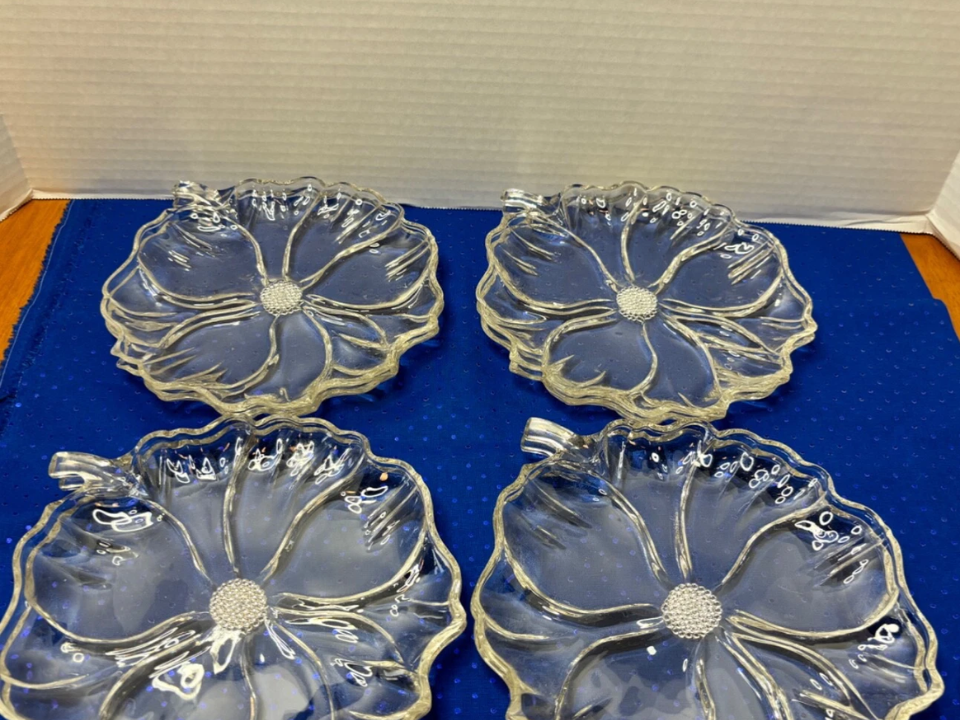
The Floral Pattern from Hazel Atlas is another stunning design that collectors often seek. This pattern features a delicate arrangement of flowers and leaves etched into the glass, creating a soft and elegant appearance. The pieces from this pattern are often clear or in a soft blue hue, with the design gracefully wrapping around the rim of bowls, plates, and glasses. This pattern was popular in the 1930s and became a staple in households during the Great Depression.
As a collectible, the Floral Pattern typically holds a value of $50 to $300, depending on the rarity of the color and the condition of the item. Pieces in mint condition or with rare colors may see higher values, making it a sought-after item among collectors.
Cherry Blossom Pattern
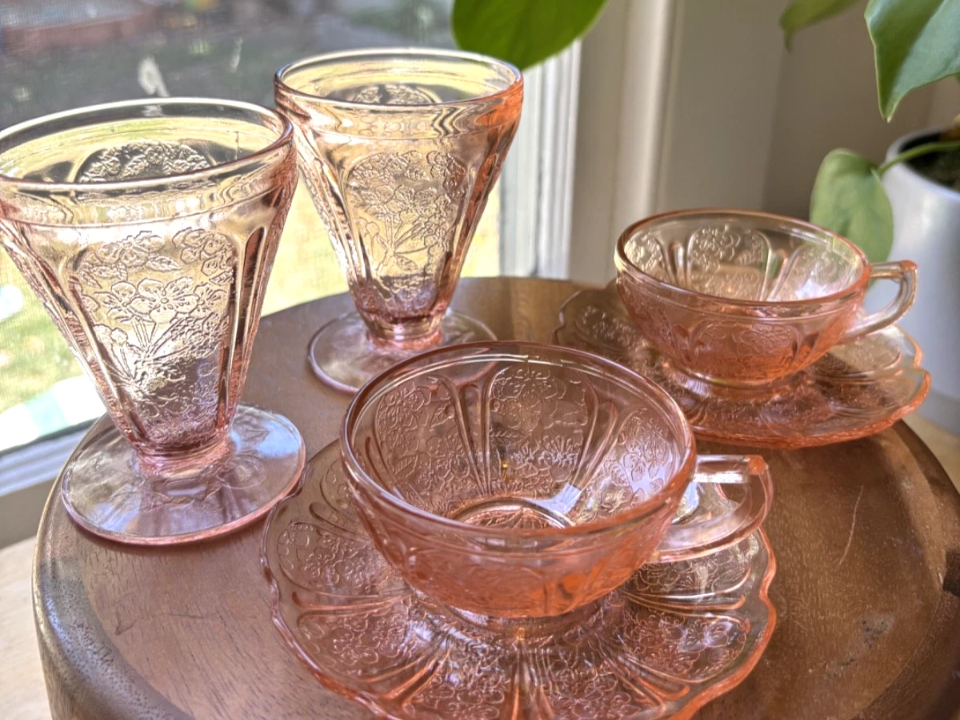
The Cherry Blossom Pattern is one of the most iconic depression glass patterns ever created. Characterized by its delicate floral design featuring cherry blossoms, it was produced by companies such as the Jeannette Glass Company. The pattern is often seen in pink or clear glass and adds a sense of vintage charm to any collection. Its simple yet graceful floral design makes it a standout in any collection of depression glass.
For collectors, the value of Cherry Blossom glassware ranges between $100 and $400. Rarer colors, such as green or blue, can increase its value, especially if the pieces are in excellent condition.
Depression Glass Ribbed Pattern
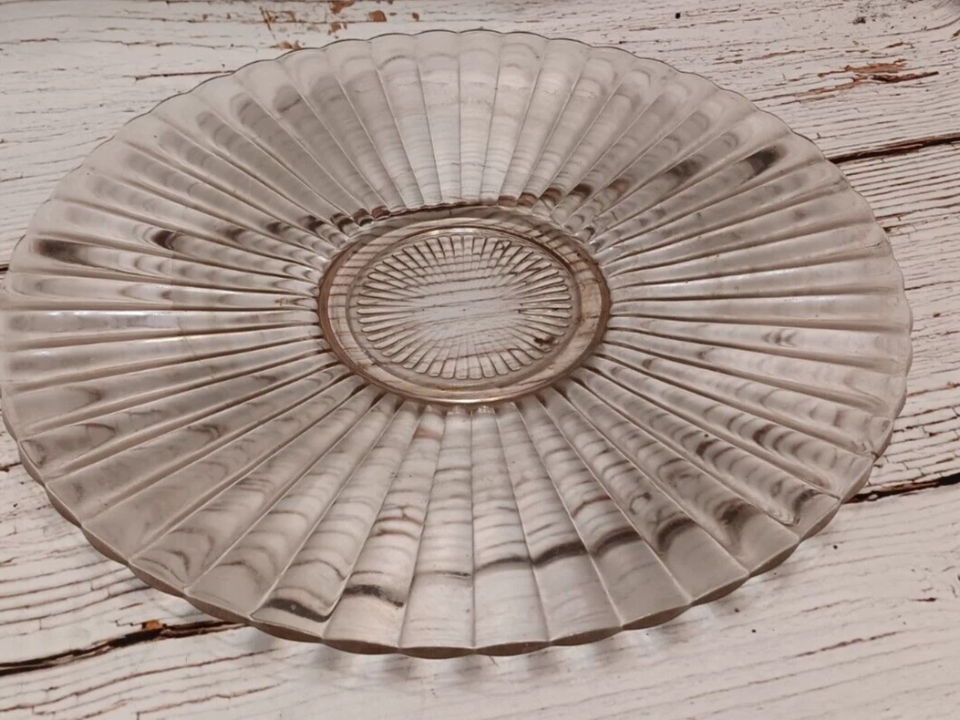
The Depression Glass Ribbed Pattern features vertical lines or ribbing that run along the length of the glassware. This pattern offers a more straightforward and minimalist design, yet it remains highly appreciated for its subtle beauty. Commonly found in clear glass, the Ribbed Pattern also appears in shades like green, pink, and amber. The ribbed design was practical, as it allowed for a sturdy grip on the pieces while also adding texture to the glass.
Collectors typically find these items valued between $25 to $200, with rare colors and complete sets fetching higher prices. Amber and pink pieces in good condition often come at a premium in the market.
Old Café Pattern
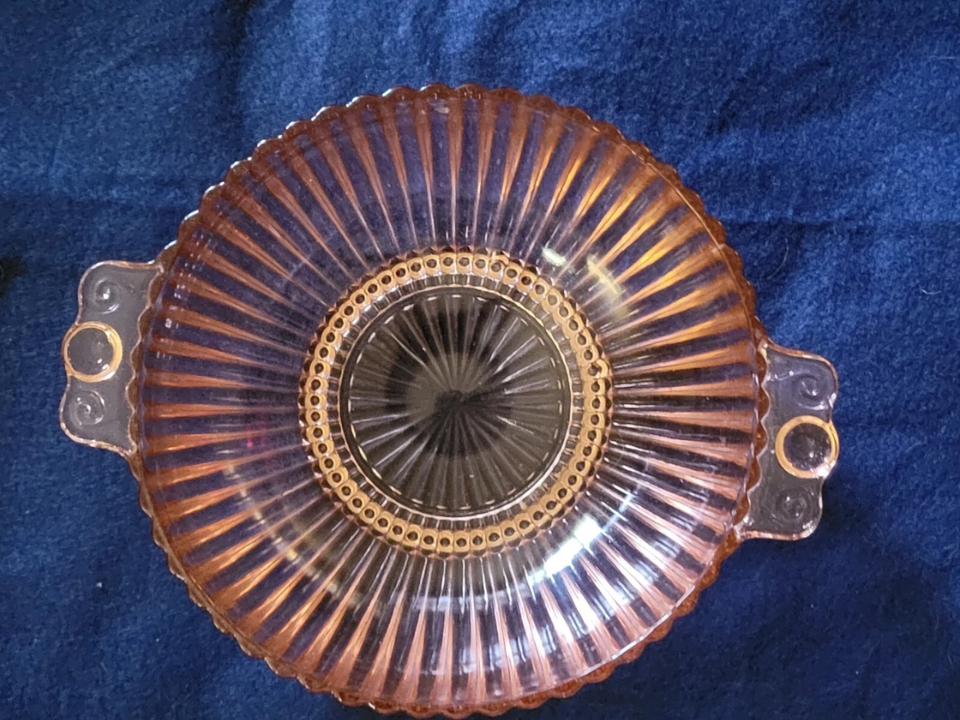
Old Café glass is a charming pattern that invokes nostalgia for the 1930s and 1940s, when it was commonly used in cafes and restaurants. Featuring a series of simple lines and geometric designs, it has a distinct Art Deco feel. Old Café was typically produced in clear, green, or pink glass and was used for serving everyday meals. Its clean lines and minimalistic design made it practical and functional for busy restaurant settings.
The value of Old Café glassware usually ranges from $50 to $250, depending on the condition and rarity of the pieces. Collectors look for full sets, particularly those that include serving dishes or pieces in unusual colors like turquoise or amber.
Windsor Pattern (By Jeannette Glass)
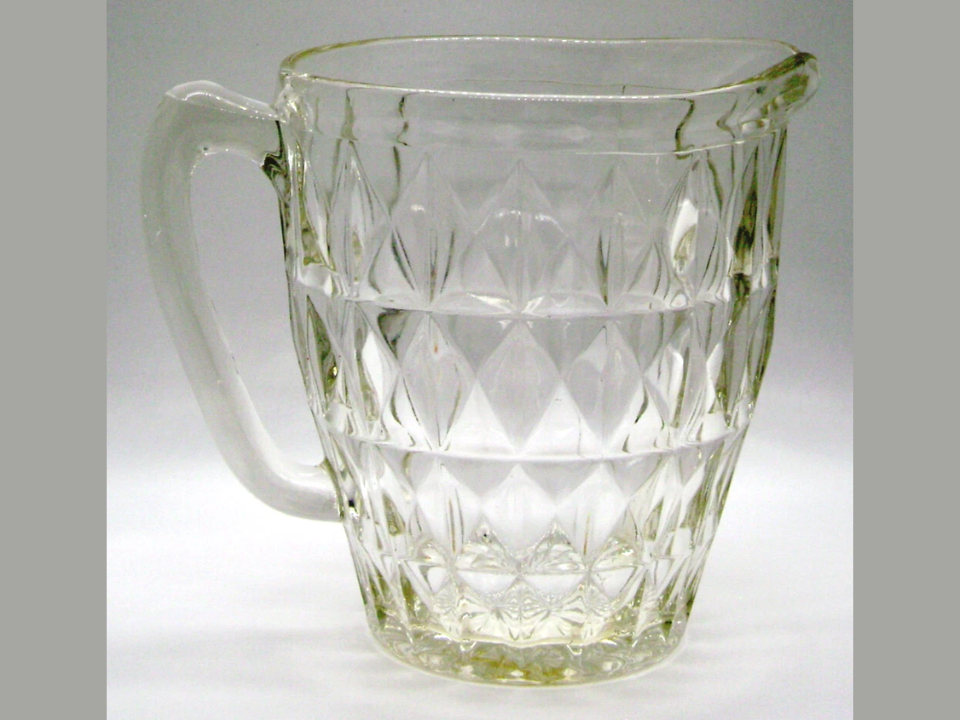
The Windsor Pattern by Jeannette Glass is highly sought after by collectors due to its unique and detailed design. Featuring large, bold floral shapes and soft, flowing curves, the Windsor Pattern was produced in the 1930s and became a hallmark of Depression-era glassware. It is often seen in pink, green, and clear glass and includes a range of pieces such as bowls, plates, and pitchers.
The Windsor Pattern can command a price between $100 and $400, with rare color variants or well-preserved pieces fetching even higher values. Green and pink glassware from this line are particularly popular, making them highly collectible.
The “Green” Pattern
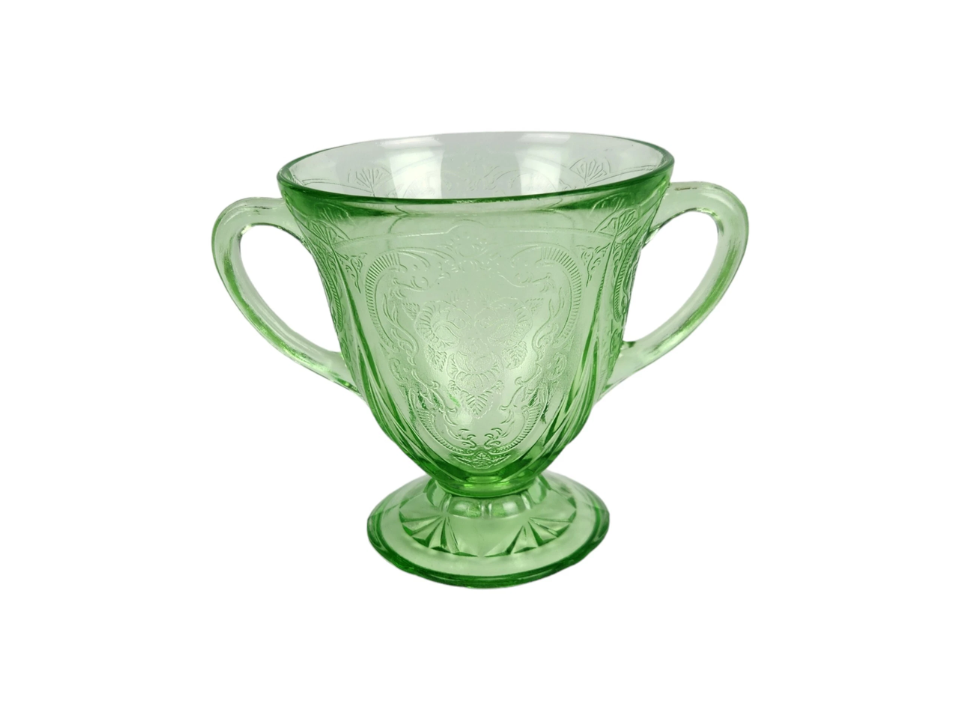
Green Depression glass is among the most popular colors of all Depression-era glassware, and the Green Pattern is a favorite among collectors. Featuring a variety of geometric and floral designs, these pieces were produced by multiple glass manufacturers, including Hazel Atlas and Jeannette Glass. The rich green hue gives the glass a timeless elegance, making it a staple in many collectors’ cabinets.
Green Depression glass pieces are typically valued between $30 and $250, with pieces in mint condition commanding higher prices. The value can go as high as $500 for rare and collectible shapes, especially those that include serving platters or glassware sets.
Pineapple and Fan Pattern
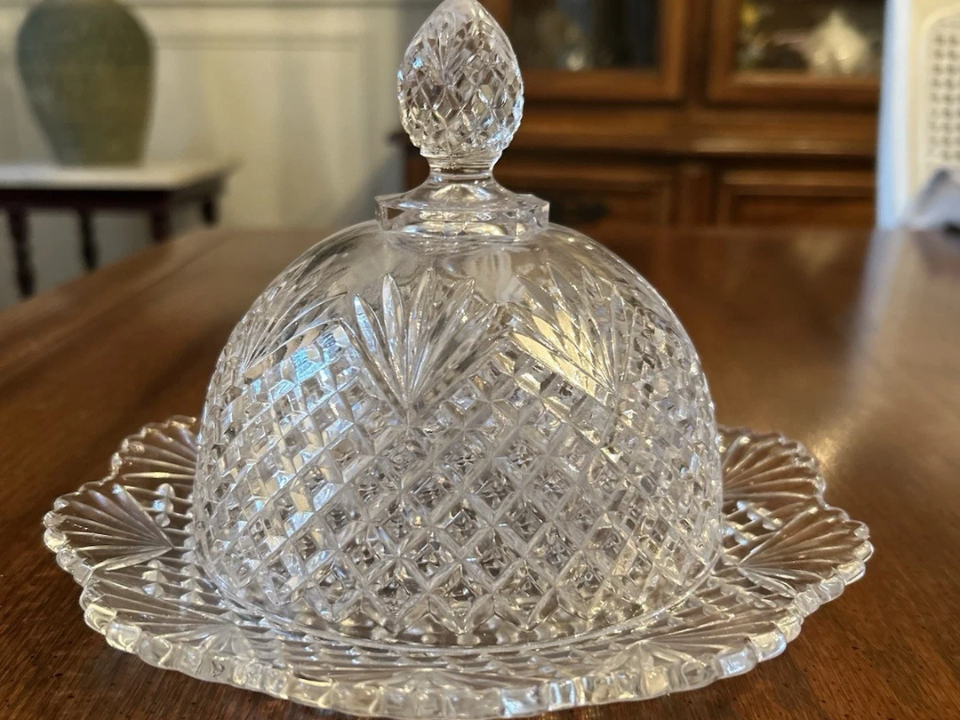
The Pineapple and Fan pattern is a standout Depression glass design that features intricate fan shapes and pineapple motifs. This pattern often comes in a clear or pale amber hue, and was popular for its elegance and craftsmanship. The fan shape creates a beautiful texture across the glass surface, while the pineapple symbolized hospitality and good fortune, making it a fitting design for formal and informal settings alike. This design was produced by multiple companies, with one of the most notable being the Jeannette Glass Company.
Collectors can expect to pay between $50 and $400 for Pineapple and Fan pieces, depending on the color and condition. The rarer pieces, particularly those in amber or with minimal wear, can fetch upwards of $500 in today’s market.
King’s Crown Pattern (By Jeannette Glass)
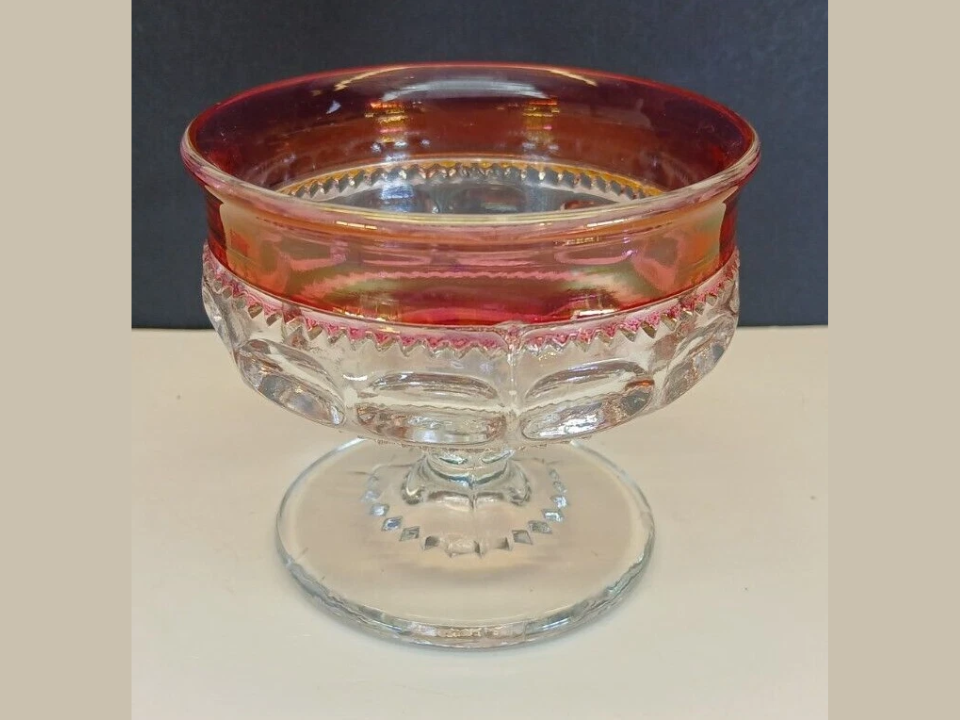
The King’s Crown pattern, often referred to as the Thumbprint pattern, is a distinctive design that features a series of raised bumps or thumbprints in a circular pattern. The design is usually seen in amber or ruby glass, giving it a regal and bold appearance. Produced by the Jeannette Glass Company, this pattern was particularly popular in the 1950s and 1960s. Its simplicity and texture make it a timeless collectible.
King’s Crown glassware is priced between $50 and $300, with the value depending on color and condition. Ruby glass pieces, especially those in perfect condition, are particularly sought after and may command prices as high as $400.
Miss America Pattern (By Hocking Glass)
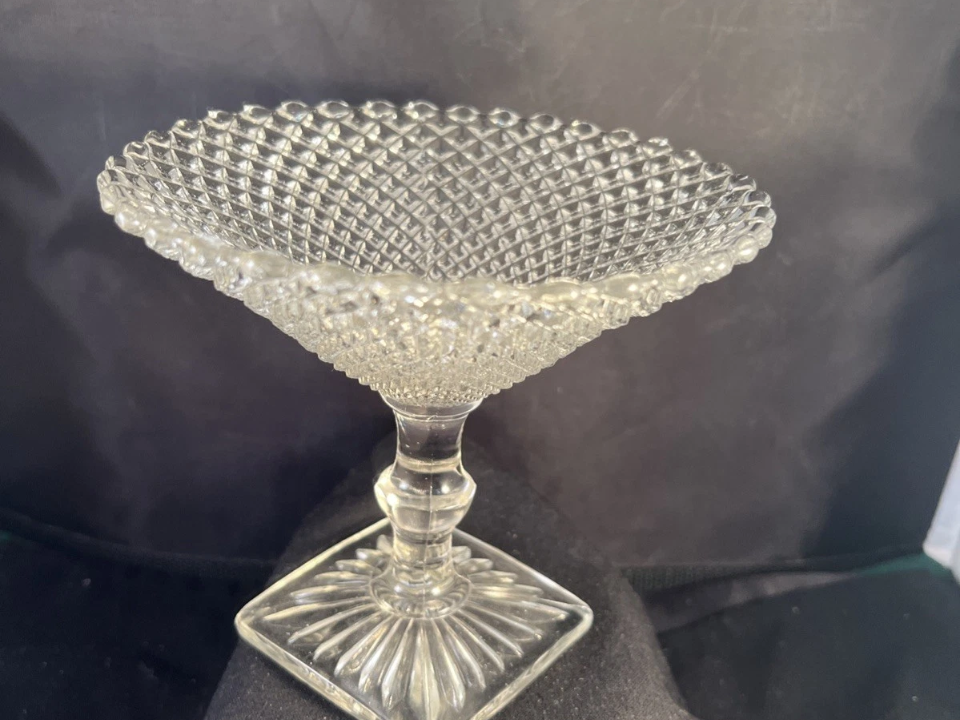
The Miss America Pattern, produced by Hocking Glass, features a scalloped edge and a floral design on the inside of the glassware. The pattern was produced in a variety of glass colors, including clear, green, and amber, with some of the rarest colors being clear blue or pink. The pieces are often smaller, such as bowls, cups, and saucers, and were made to be practical while still maintaining an elegant appearance. This pattern was widely used in homes during the 1930s and 1940s.
The Miss America pattern is often valued between $25 and $150, depending on the rarity and condition of the piece. Clear and amber items are the most common and are typically on the lower end of the price range, while rare colors like blue can fetch upwards of $250.
Swirl Pattern
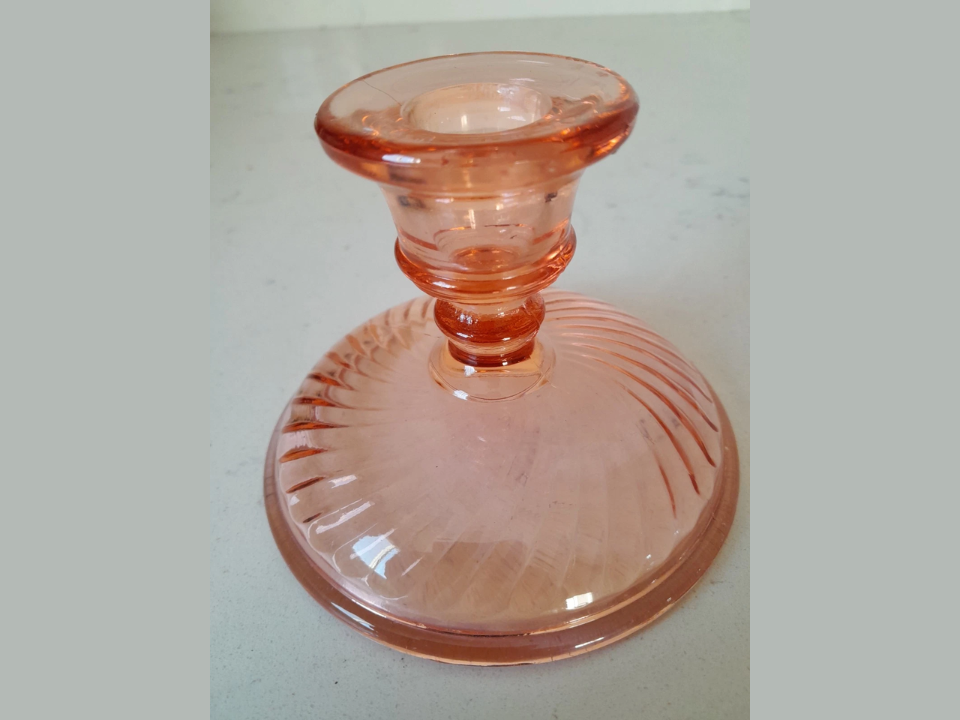
The Swirl Pattern is a mesmerizing design that features soft, flowing lines that spiral around the glass, creating a sense of movement. Produced in the 1930s, this pattern was popular for its simple yet striking appearance. The Swirl design is often found in green, clear, or pink glass, with each piece carrying a sense of graceful elegance. The pattern’s smooth, swirling texture makes it a standout in any collection of Depression glass.
Pieces from the Swirl Pattern generally have a market value ranging from $50 to $300, with rarer colors like blue and green attracting higher prices. Well-preserved items, such as large serving bowls or pitchers, can sometimes reach values closer to $400 or more.
Madrid Pattern
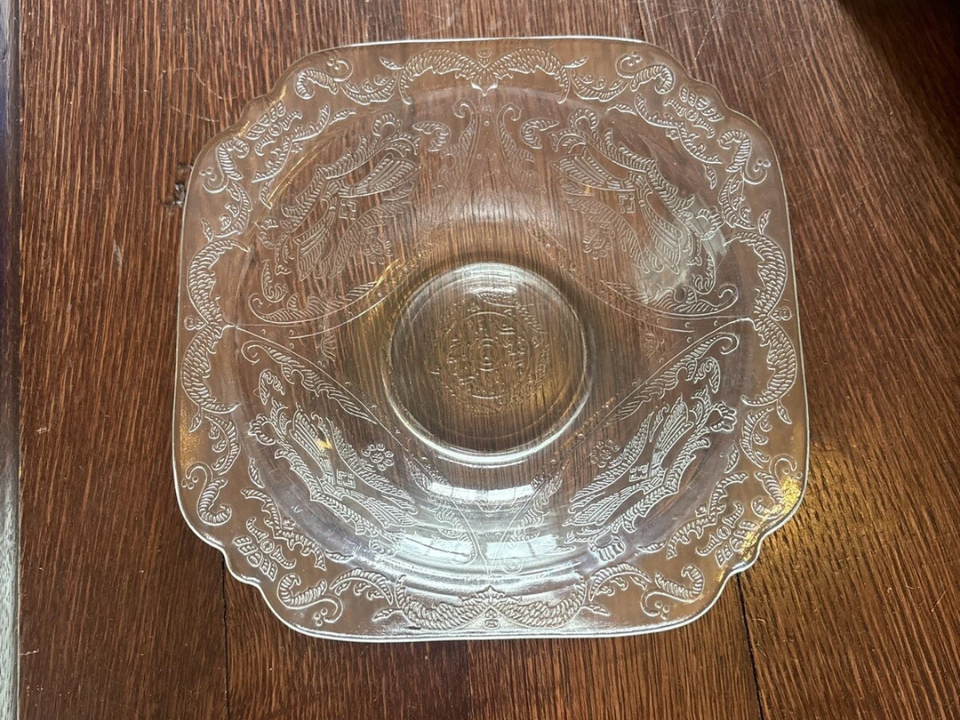
The Madrid Pattern, created by the Federal Glass Company, features a bold, geometric design with a distinctive diamond shape and intricate detailing around the rim. This pattern was popular in the 1930s and was known for its use of rich amber and clear glass. Its symmetrical design gives it a timeless appeal that still resonates with collectors today. The Madrid Pattern was made in various types of glassware, including plates, bowls, and cups.
Collectors often find Madrid pieces valued between $50 and $250, with amber items typically fetching higher prices due to their rich color. A complete set or rare color variants can increase the value, with some pieces reaching over $350 in well-preserved condition.
Rose Pattern (By Jeannette Glass)
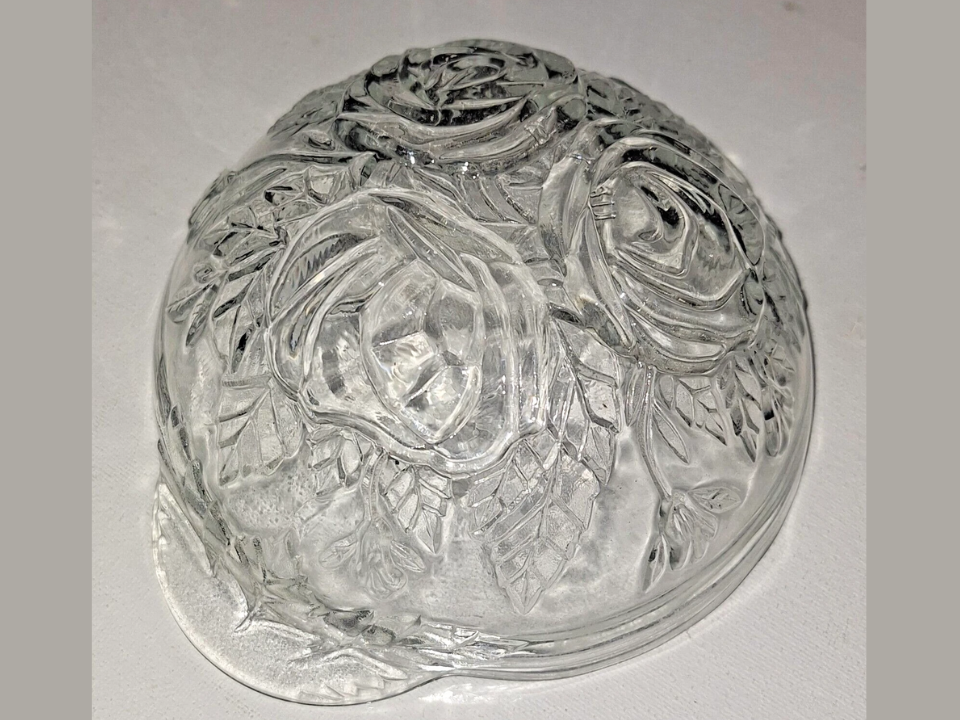
The Rose Pattern is one of the most romantic and detailed designs ever made by Jeannette Glass. As the name suggests, the pattern features rose motifs etched into the glass, often appearing in a soft pink or clear color. This pattern was primarily produced in the 1930s and became one of the most recognizable Depression glass designs. The gentle, floral imagery appeals to many collectors who appreciate both the artistry and vintage charm of these pieces.
The Rose Pattern typically ranges in price from $50 to $250, depending on the condition and color of the pieces. Pink glassware is particularly sought after, and collectors may pay higher prices for well-preserved pieces, especially those that come in complete sets or include rare color variations.
Thistle Pattern (By Fenton Glass)
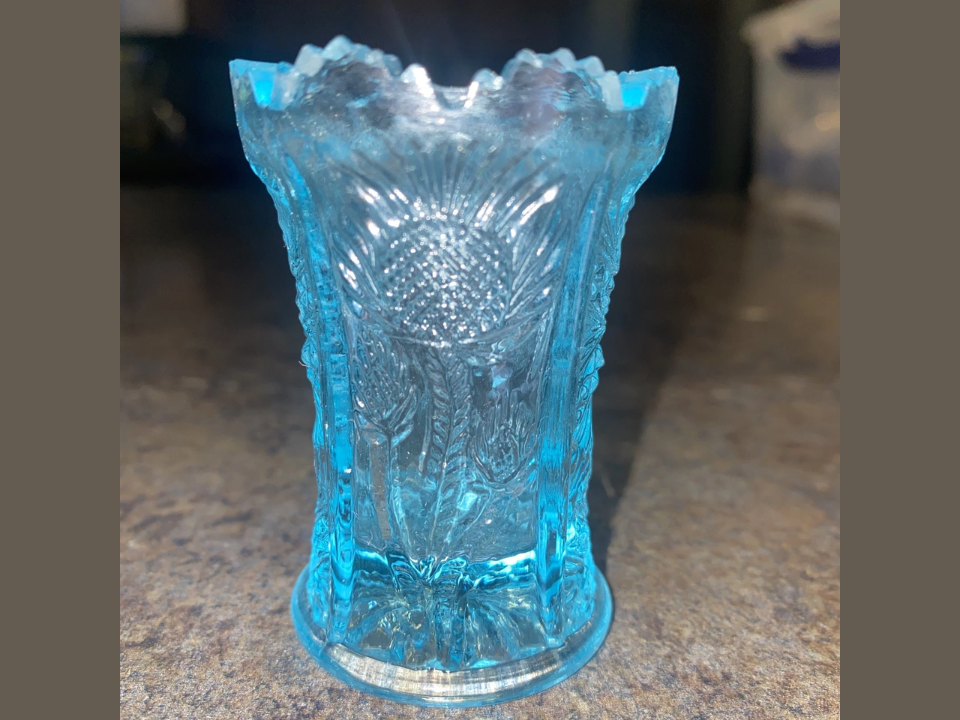
The Thistle Pattern, produced by Fenton Glass, features a beautifully detailed thistle flower, which is raised above the surface of the glass. This pattern is often found in iridescent glass, making the colors shift when viewed from different angles. Fenton produced the Thistle Pattern in several colors, including amber, green, and blue, with the most prized pieces being those in the unique opalescent glass. The pattern is most associated with the 1940s and remains a favorite among glass collectors.
Thistle-patterned pieces typically range from $50 to $400, with the iridescent amber or blue glass fetching the highest prices. Some opalescent pieces, especially in good condition, can be worth upwards of $500, particularly those that feature rare designs.
Early American Pattern
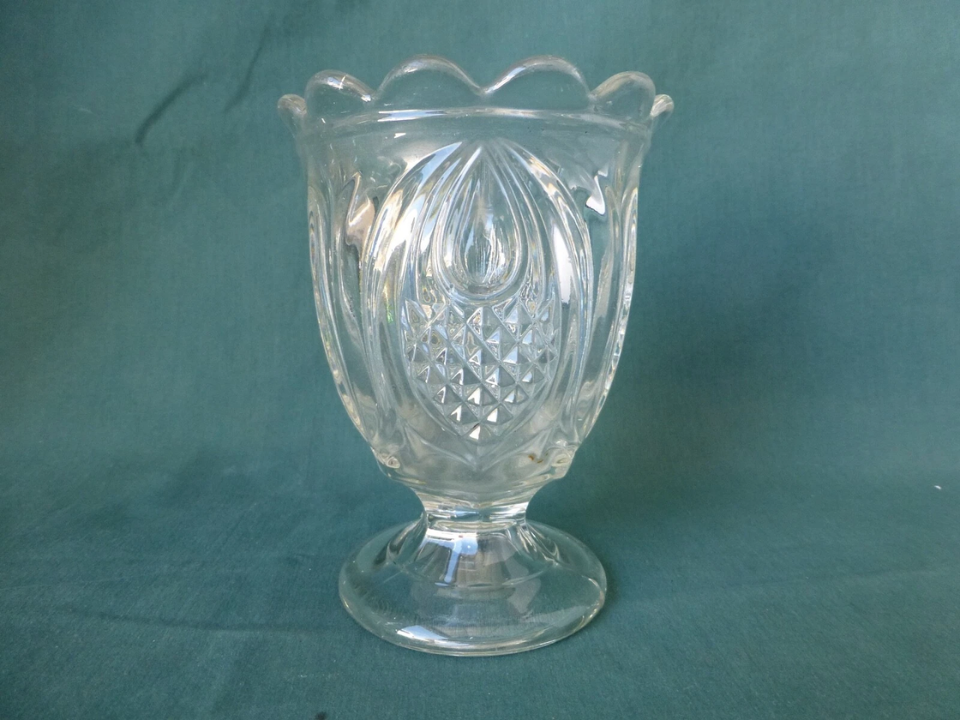
The Early American pattern was one of the earliest designs to emerge from the Depression glass era, featuring patriotic and classical imagery. Often seen in rich amber or clear glass, the pieces are characterized by their simplicity and utility. The pattern includes motifs such as stars, stripes, and shields, which reflect the design styles popular in America during the 1930s. This pattern is often associated with the Federal Glass Company and continues to be a popular choice among collectors of vintage glassware.
Early American glassware typically has a market value of $50 to $250, with items in mint condition or rare colors reaching higher prices. Amber and clear pieces are more common, while colored variants like blue and green are considered rarer and may reach values of $350 or more.
This article originally appeared on Avocadu.
